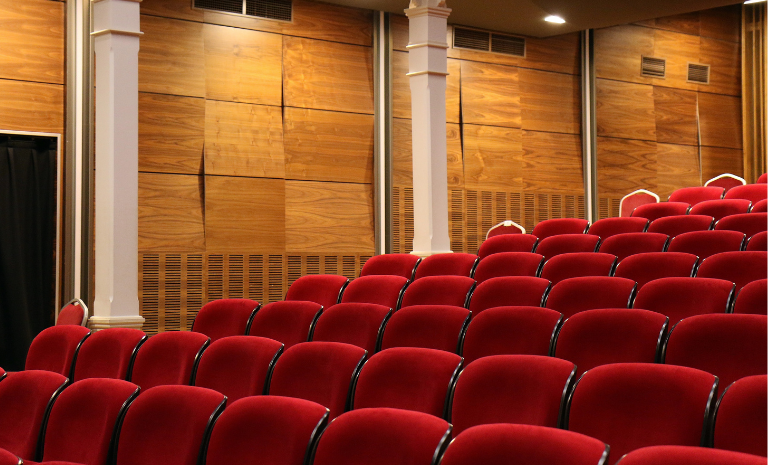Arts and Culture
Business Strategy
Article
The Culturephiles
eda464a0-4141-4b1e-a7e2-cc78109dbed2
8 min
https://edge.sitecorecloud.io/tessiturane75c3-tessituraneee12-development-6640/media/Images/Discover-Images/Andrew-Blog/Creating-Revenue-Diversity/Creating-Revenue-Diversity-1550x800-768x465.jpeg?h=465&iar=0&w=768
Does your budget look like a Pac-Man or a Trivial Pursuit wheel?
Creating Revenue Diversity in a Pandemic

President & CEO, Tessitura
Creating Revenue Diversity in a Pandemic
10/29/2020
8 min
Since the start of the pandemic, Tessitura has talked with thousands of cultural professionals about their challenges and successes. We have synthesized our learnings into Six Traits of Forward-Looking Cultural Organizations. This post is about Trait 3: Diversify Revenue Streams.
I have personally spoken with a hundred or more arts and culture executives since the start of the pandemic. Performing arts and museums, large and small, North American, Australian, European. Regardless of who I am talking with, the word “budget” enters the conversation by sentence three.
These parts of the conversations are not a great deal of fun. But I have found that organizations faring the best right now have one budget concept in common: revenue diversity. They have diversified revenue streams.

Imagine the revenue side of your budget as a pie chart. Does it look more like a Pac-Man or a Trivial Pursuit Wheel? Those organizations with a revenue pie chart that looks more like a Trivial Pursuit wheel seem to be faring better right now.
I recognize that an organization cannot change their income structure overnight. However, in a moment when so many budgets have been slashed, there is an opportunity to rethink now how to build back for the future. As you recover, what do you want your pie chart to look like? I suggest a diverse pie chart.
Why Revenue Diversity?
The best advice about revenue diversity I ever received was from a microbiologist. Shannon Bennett is the Chief of Science at the California Academy of Sciences. Not long ago, I chatted with her about what we can learn about surviving this difficult time by looking for models from nature. A surprising insight was her thinking on the importance of diversity to mitigate risk.
She pointed out that a richly diverse forest is far more resilient after a fire than one planted by humans. A natural forest has many different kinds of trees, plants and ground cover. Even if one kind of tree is clobbered by the fire, another may be spared.
Diversity provides redundancy in the system. On the other hand, with a human-planted forest — a monoculture — the fire rips through the whole thing and the forest is destroyed. There is no redundancy. Scientists will tell you that the most resilient forests look like Trivial Pursuit Wheels rather than Pac-Men (in as many words).
Moving your revenue mix from Pac-Man to Trivial Pursuit Wheel
Personal finance advisors recommend a diversified portfolio if your goal is to reduce risk. A healthy mix of stocks, bonds and fixed income options helps ensure that even when one aspect of the market is tanking, another is hanging on or even benefitting.
For arts and culture, this might traditionally look like contributions plus ticket sales plus facility rentals plus retail sales. Even in a moment when all revenue streams are taking a pounding, we’ve seen resilience in organizations with a more balanced portfolio.
Imagine my surprise, for instance, when speaking to a mid-sized opera company executive in the midst of COVID. “You’ve cancelled your season, has this gutted your budget?” I asked. They responded with a weary chuckle, “This is opera! Ticket sales have never been the biggest part of our budget. Our donations are carrying us right now.”
And yet, I can remember the exact opposite being true during the Great Recession of 2008–2009. In that era, while donations were significantly impacted as the stock market wilted, in many cases, it was ticket sales that managed to hold on (or at least fall less sharply). Some cultural attractions saw admissions increase during the Great Recession as families replaced expensive summer vacations with more modest staycations — a revenue boon to local museums, zoos and summer camp programs.
Revenue diversity takes many forms. Here are a few strategies in the time of COVID:
New content brings new donors
I spoke with one symphony executive who reported thousands of new donors when they encouraged contributions as part of their free streaming programs. They have seen a clear correlation between donations and content. During weeks when they don't have any content, donations are low; weeks with archived content have a modest level; and weeks with new streamed content have the strongest donations.
Of course, many organizations don't have the ability to produce new content like this to gin up new contributions. But do you have access to the artists your audiences miss? Can you invent new content in unexpected ways?
Existing artistic relationships can create new experiences
As I noted in this post, some organizations have invented new ways to connect their artistic product with their audiences. The Dallas Opera became a digital opera sensation during COVID with their TDO Network. Like "ESPN but for Opera", they have a popular series of episodes featuring their artists discussing the form and their lives. Or consider The Groundlings Theatre, an improv-based company in Los Angeles. They realized that their community of improv students could benefit from career advice from successful comedians. Leveraging their existing relationships with many of LA’s top comics, The Groundlings began a paid webinar series where the professional comedians provide career tips for budding comics across the globe. It’s been a hit.
Distance makes the heart grow fonder for retail
A surprising trend we heard from a number of our museums as they reopened was a much higher per guest spend in the retail shops. The executives I spoke with couldn't account for it, other than perhaps a "badge of participation" after being away for so long. A common theme I have heard from executives across the cultural world is newfound hometown pride. People miss their cultural organizations and are proud to show allegiance. Have you considered increasing (or creating) the retail piece of your pie during COVID?

• • •
What does your community need right now that you are amazing at? What assets do you already have that solve that need? How might you keep your brand top of mind while helping create a new revenue stream?
Revenue diversity likely won't happen over night, but in this moment of trying new things, it could be a great opportunity to add a few pieces to your pie.
• • •
If you would like to learn more about the Six Traits and evaluate how your own organization is demonstrating them, download our strategy guide.
Topics
Arts & Culture
/Business Strategy

Make your on-sales a success
Ticketing & Admissions / Digital / Customer Service / Technology
Eight tips to help you plan for a smooth on-sale

A contactless customer journey with a personal touch
Arts & Culture / Business Strategy / COVID-19 / Technology / Ticketing & Admissions
How Georgia Aquarium creates a visitor-focused experience
